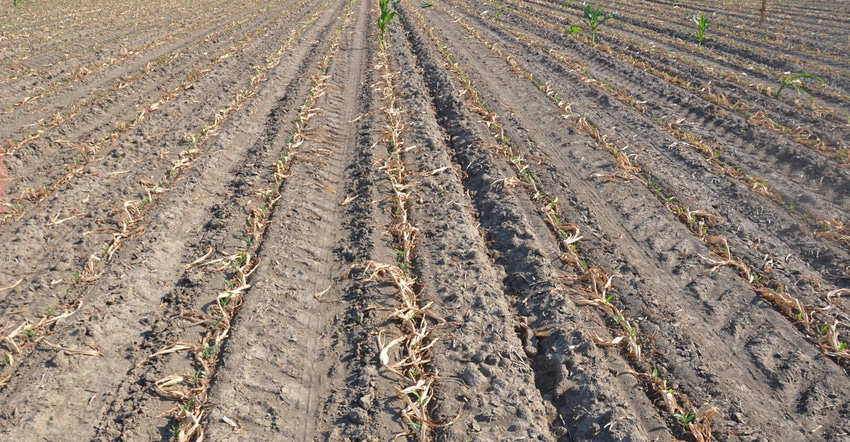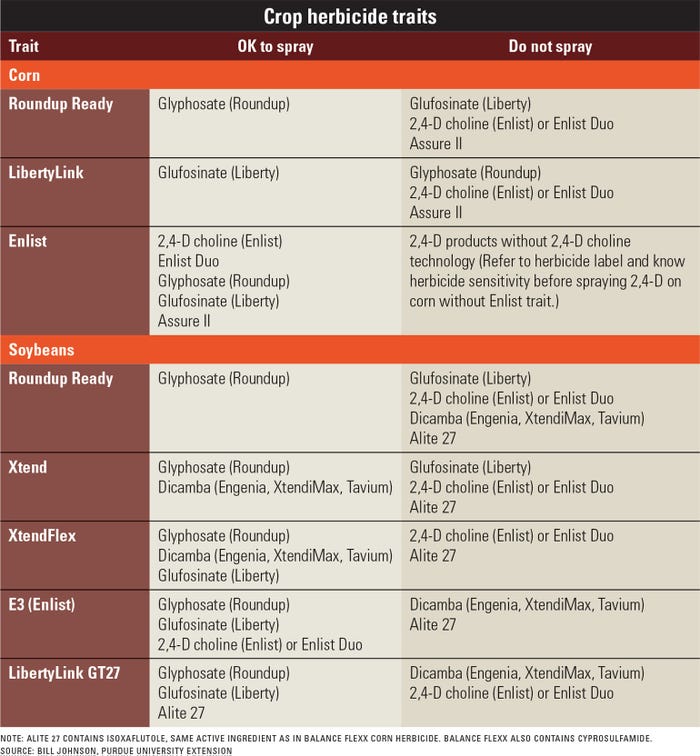
Something was killing scattered crop fields last summer throughout Indiana. By midsummer, the damage was primarily on soybeans. They didn’t just wilt. In almost every case, they wound up brown and dead.
It wasn’t a disease. It wasn’t an insect. It was spraying the wrong herbicide over the field. The crop didn’t have tolerance to one or more herbicides in the tank.
How bad was it? One farmer reported last fall that although he got a slow start combining soybeans, he would catch up soon. His neighbor was bringing his combine to help because nearly all his soybeans were wiped out by misapplication.
“We heard of numerous incidents where herbicides were sprayed on the wrong crop,” reports Bill Johnson, Purdue University Extension weed control specialist. “There were apparently various reasons, from not keeping good notes on which varieties with a specific tolerance were planted where, to not understanding which herbicides could be applied over soybeans with certain traits.”
Reducing error
The frustration is easy to understand, Johnson says.
“I work with herbicides every day because it’s my job, and it can still be difficult to keep everything straight,” he says. “If you’re doing many other things like farmers do and trying to keep on top of herbicides and traits at the same time, it can be nearly overwhelming.”
Johnson’s best advice is to understand what can be applied over various traits for the corn and soybeans you’re planting when you put your herbicide program together. Then once planting season begins, develop a system that allows you to record what is planted in each part of each field. Have that information available when it’s time to spray the field. If it’s custom sprayed, make sure the applicator has the information.

If you’re comfortable with technology, keep records on a computer, Johnson suggests. Many planter and sprayer monitor systems today can develop as-applied maps so you know what was planted where, and which herbicides were applied everywhere.
If you still prefer a pocket notebook, keep your records there, he advises.
“The important point is that when it’s time to spray, you and whoever is driving the sprayer know what hybrids or varieties were planted where and which products can be sprayed over them,” Johnson says.
Until a sprayer is developed that won’t turn on if the wrong product for the field is in the tank, getting it right is ultimately up to you, Johnson concludes.
About the Author(s)
You May Also Like




